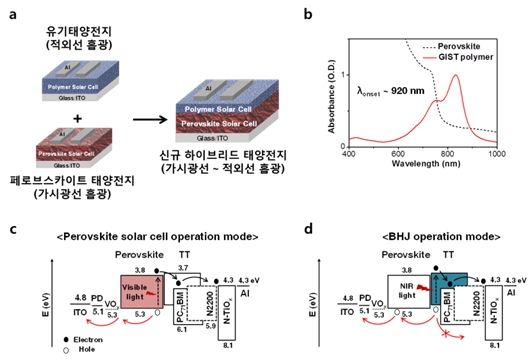Media Center
A multimedia mosaic of moments at GIST
GIST Excellence
[Press Release] Research team led by Professor Kwanghee Lee develops high-efficiency hybrid solar cells
- 엘리스 리
- REG_DATE : 2016.06.27
- HIT : 1150
High-efficiency Hybrid Solar Cells Developed

A research team led by Professor Kwanghee Lee has developed a new high-efficiency hybrid solar cells with supports from the Korea Research Foundation, Ministry of Science, ICT and Future Planning, Climate Change Response Technology Development and the New Industry Creation Project.
These hybrid solar cells can absorb a wide spectrum of lights from visible lights to infrared. Sun light is composed of UV light (7%), visible light (44%) and infrared (48%). Current most efficient perovskite solar cells only absorb visible lights.

Development of the new hybrid solar cells was able to present a new way to overcome the theoretical limit efficiency of thin film solar cells.

Professor Kwanghee Lee said, “We have succeeded in developing the new hybrid solar cells that can absorb a wide spectrum of light and produce high voltage by combining perovskite and organic photoactive layer. Moreover, our solar energy technology is another step forward in resolving energy shortages in the future.”
Their research paper has been published in the April 27, 2016, issue of Advanced Materials.